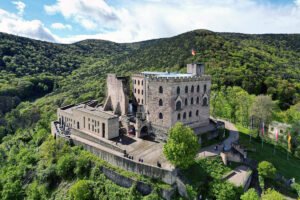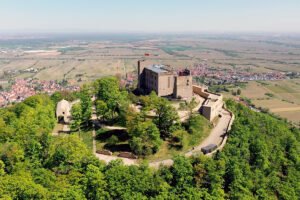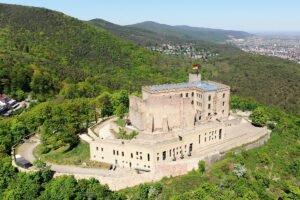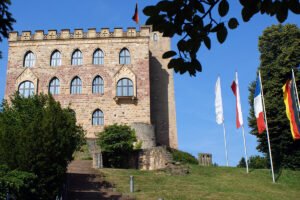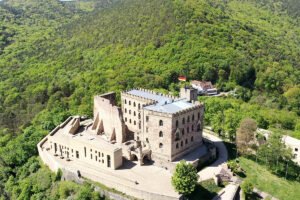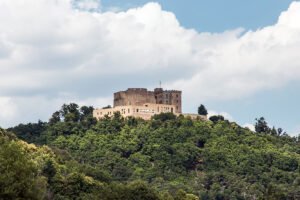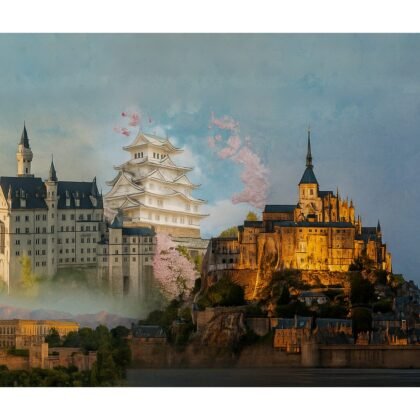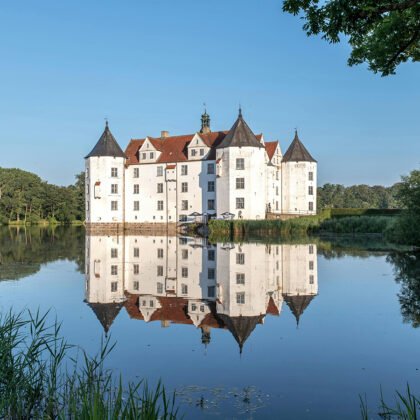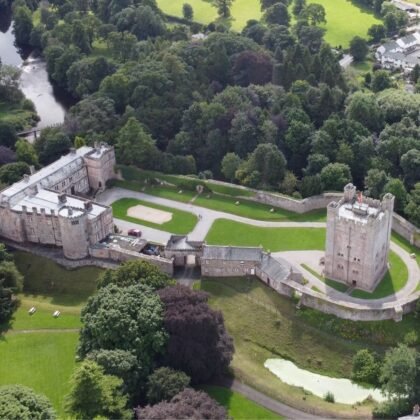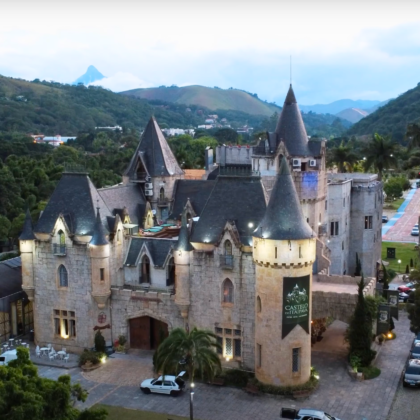High above the vineyards of the Palatinate Wine Route, Hambach Castle watches over the Rhine plain like a steadfast guardian. More than stone and battlements, it is a living emblem of freedom: the site of the 1832 Hambach Festival, where the black‑red‑gold first waved as a call for unity. Today, trails, gardens, and an insightful exhibition make history feel close enough to touch.
Quick Facts
📍 Location: Neustadt an der Weinstraße, Rhineland-Palatinate, Germany
🏗️ Construction Period: 12th–14th centuries; neo-Gothic rebuild mid-19th century
🏰 Architectural Style: Medieval fortress, Neo-Gothic revival, contemporary additions
🎭 Famous For: Hambach Festival (1832) and the black-red-gold tricolour—symbolic birthplace of German democracy
👑 Notable Figures: August von Voit (19th-century architect); Max Dudler (contemporary architect)
🏆 UNESCO Status: No (European Heritage Label, 2015)
🌐 Official Website: https://hambacher-schloss.de/?lang=en
Map
Historical Context
Rooted in the 12th century with a stalwart keep, Hambach Castle grew into a medieval fortress that flourished through the 13th and 14th centuries. It suffered repeated blows—most devastatingly in 1688, when French troops ravaged it during the War of the Palatinate Succession. Long a local stronghold, the site took on national meaning on 27 May 1832, when nearly 30,000 people gathered here to demand freedom, civil rights, and German unity. The black, red, and gold tricolour emerged as a banner of hope, and the castle became known as the cradle of German democracy. In the mid‑19th century, architect August von Voit shaped a neo‑Gothic reconstruction; recent restorations and additions by Max Dudler respectfully weave contemporary forms with regional sandstone. In 2015 it received the European Heritage Label.
Gallery
Visiting Information
🗓️ Best Time to Visit: April, May, late September, and October
🗺️ Location Perks: Set amid rolling vineyards on the Palatinate Wine Route with sweeping views across the Rhine plain. Combine your visit with wine tastings in nearby villages and strolls through Neustadt’s charming old town.
⏳ Estimated Visit Duration: Plan to spend 2–3 hours exploring the castle and its grounds.
💡 Visiting tips: Wear sturdy shoes for the uphill approach or use the shuttle from the car park. Book tickets online on event days and reserve a table at the on-site restaurant, especially on weekends.

